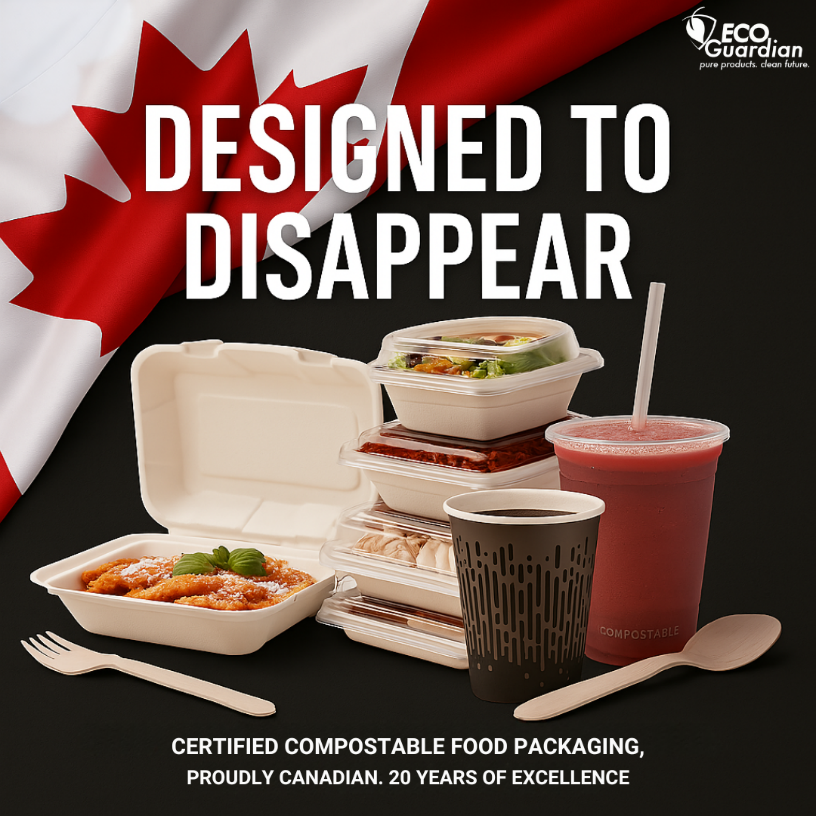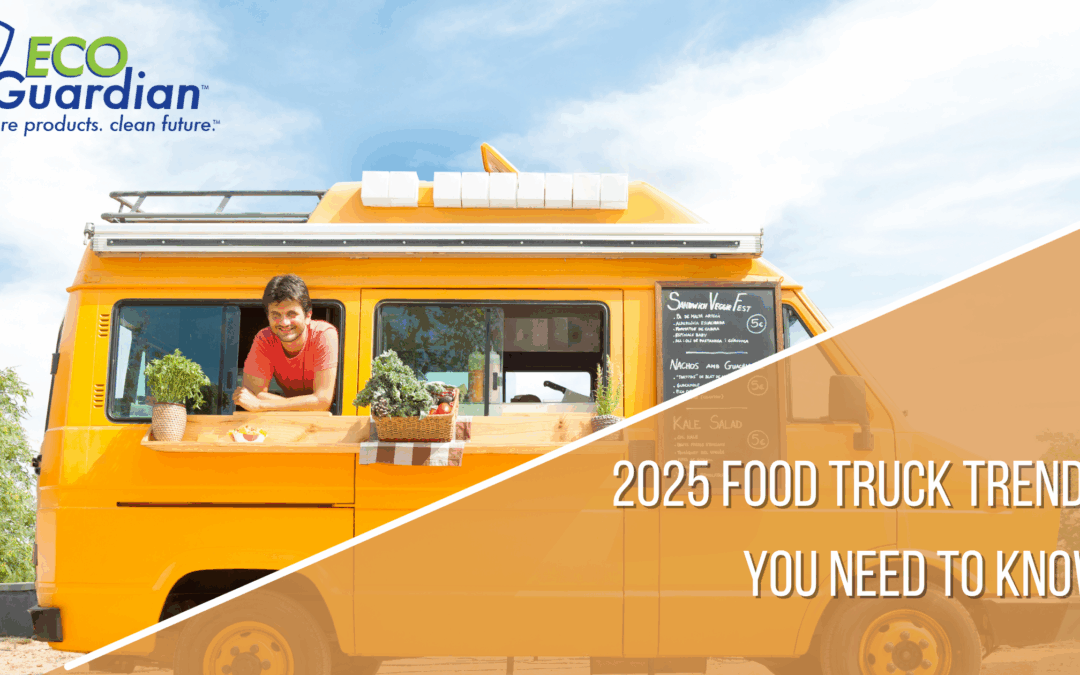2025 is shaping up to be a transformative year for the food truck industry. What used to be a fun weekend side hustle or festival staple is now a serious, fast-evolving business with new challenges and exciting growth opportunities.
With over 48,000 trucks now operating across North America and consumer expectations shifting rapidly toward sustainability, transparency, and convenience, food truck owners need to adapt quickly to stay competitive and profitable.
If you run a food truck, you already know the hustle: long hours, unpredictable foot traffic, rising costs. Now add the pressure to stand out with a unique concept, reduce your environmental impact, and build genuine connections with your customers.
The good news? Knowing what’s trending in 2025 gives you an edge to turn these shifts into opportunities to future-proof your business and support a brand that people keep coming back to.
Here are 8 food truck trends shaping 2025, backed by real insights to help you stay ahead:
1. Corporate Partnerships Are Opening Doors for Growth
Food trucks are no longer limited to seasonal festivals and street corners, they are becoming key players in the corporate world. Companies across various sectors, including tech, finance, and marketing, are partnering with food trucks for on-site catering, employee perks, and even brand activations. These gigs are not only great for employee morale, but they also open steady weekday revenue streams that were once reserved for catering companies. Trucks with polished branding, efficient invoicing, and curated “corporate-friendly” menus are best positioned to land these gigs.
Tips:
- Offer tailored menu packages for office events and weekday lunches.
- Create a “Corporate Services” section on your website or social media.
- Use digital invoicing tools to make payment fast and easy.
2. Pre-Order-Only Models Are Gaining Momentum
Speed and predictability are a win-win for customers and operators alike. With mobile ordering and digital POS systems more accessible than ever, many food trucks are moving to pre-order models to streamline service, reduce food waste, and boost profitability. Apps and online ordering now let customers place their orders ahead of time, reducing peak-hour chaos while improving customer experience. This approach not only keeps lines short, but can also help predict demand, limit waste, and create a smoother workflow for your team.
Tip:
- Use QR codes, app integrations, or Instagram order forms.
- Promote your ordering system across all channels to make it easy for customers to plan ahead.
- Offer time slots for pickups to avoid crowding.
3. Niche Concepts Are Standing Out in Saturated Markets
With over 48,000 active food trucks operating in North America, it takes more than good food to stand out. From all-cauliflower menus to Korean vegan BBQ or lobster-only trucks, hyper-focused concepts are gaining attention in crowded food truck markets. While classics like burgers and tacos remain top sellers (21% and 10% of trucks serve these, respectively), there’s a growing demand for bold flavours and dietary-conscious menus. Plant-based options are on the rise, and seafood is seeing an 18% rise in consumer demand since 2020.
Customers are gravitating towards trucks that know exactly who they are and what they offer. Specialization allows food trucks to stand out and become go-to destinations for authentic, unique culinary experiences. Gen Z and Millennial consumers especially value authenticity, storytelling, and brand clarity.
Tips:
- Use your story (culture, ingredients, inspiration) as your differentiator.
- Partner with local food bloggers or influencers who align with your concept.
- Build your brand around your niche with cohesive design, messaging, and online presence
4. Mental Health-Friendly Operations Are on the Rise
The physical and mental demands of the food truck industry are prompting food truck owners to rethink how they operate. Long hours, tight spaces, and unpredictable schedules can burn out even the most passionate operators. However, that’s starting to change with more operators pushing back against the nonstop hustle culture and making well-being a real priority for both themselves and their teams.
Building a sustainable business isn’t just about eco-friendly packaging, it’s also about looking after the people behind the counter. Trucks that invest in healthier working conditions tend to have lower staff turnover and deliver more consistent, high-quality service. Plus, customers notice when a business treats its team well, building loyalty and goodwill.
Tips:
- Set intentional days off between markets or festivals.
- Focus service hours on your busiest, most profitable times.
- Batch prep on non-service days to reduce stress during rush hours.
5. Authentic Flavours Are Outshining Fusion Craze
Fusion cuisine isn’t dead, but it’s no longer the star of the show. In 2025, authentic, immigrant-led menus rooted in tradition are leading the conversation. Food trucks that highlight their heritage, share their stories, and serve traditional recipes are seeing stronger engagement than those chasing the latest trend. It’s not just about the ingredients or the recipes – it’s about the narrative behind them.
Many of today’s trucks are run by first- or second-generation immigrants who are sharing their culture through personal recipes, making their stories just as powerful as their flavours. Especially for Gen Z, who are drawn to identity-driven brands, a menu that reflects real culture and experience is more meaningful than a trendy mashup.
Tip:
- Share the story behind a dish or ingredient on your menu board or social channels.
- Use short-form video (Reels or TikTok) to bring your story to life visually and connect with your audience.
- Highlight your team’s background. People want to support people.
6. Ingredient Waste Reduction Is Becoming a Brand Advantage
Sustainability now goes beyond packaging. Many food trucks are finding smart, creative ways to reduce ingredient waste by using “imperfect” produce, turning leftovers into broths or croutons, or sourcing surplus from local farms. These practices help reduce costs and simultaneously communicate your commitment to environmental responsibility—something that resonates strongly with today’s conscious consumers. In fact, a 2025 Gitnux report found that 65% of customers are more likely to support food vendors that highlight sustainability practices on their menus. When you communicate these efforts, you shift from being “just a meal” to a mission-driven brand.
Tip:
- Partner with local farms or food rescue programs for discounted imperfect produce.
- Share your creative reuse strategies on social media to build trust and engagement.
- Track your food waste to spot savings and turn them into storytelling opportunities.
7. Brand Transparency Is the New Premium
Customers increasingly value businesses that are open, honest, and grounded in real-world values—not just flavour. They want to know exactly what they’re buying, where it’s coming from, and who is behind the counter. Trucks that share their sourcing practices, brand values, and behind-the-scenes moments are creating deeper connections with customers.
Transparency builds trust, and in a crowded market, trust leads to repeat visits, social shares, and word-of-mouth marketing. A NielsenIQ study found that Gen Z ranks “brand transparency” among their top three values when choosing where to eat.
Tips:
- Share behind-the-scenes content from your kitchen or sourcing process.
- Incorporate clear messaging about sourcing, sustainability, and team members into your branding.
- Add short blurbs about key ingredients or vendors to your Instagram captions, menu, or website.
8. Sustainability Is No Longer Optional
With growing environmental concerns and rising customer expectations, sustainable practices have moved from nice-to-have to non-negotiable in the food truck industry. More operators are embracing eco-conscious strategies like compostable packaging, local sourcing, and food waste reduction. These initiatives not only reduce environmental impact but also resonate with environmentally conscious consumers.
In fact, 90% of consumers say they prefer vendors who commit to sustainability, and 43% are willing to pay more for it. Even packaging alone can be a deal-breaker: one study found that 39% of customers have switched brands based on packaging sustainability. These shifts show that sustainability isn’t just ethical, it’s a smart business move that builds customer loyalty, boosts social media engagement, and drives repeat visits.
Tips:
- Switch to compostable packaging and mention it visibly on your truck, menus, and social media bios.
- Add a sustainability highlight on Instagram to showcase your efforts in one easy-to-find place.
- Promote your sustainability story with signage like “Locally Sourced,” “Zero-Waste Packaging,” or “100% Compostable” at your service window.
If you’re ready to make the switch, start by replacing plastic containers and utensils with compostable alternatives. Compostable clamshell containers made from sugarcane (bagasse) are a great alternative to plastic PP or PET boxes. For drinks, PLA drink cups offer the same durability as PET but break down in composting conditions. Ditch plastic forks and knives for CPLA or wooden cutlery, and trade single-use plastic and foam plates for compostable fibre tableware.

Want to future-proof your food truck for 2025?
In 2025, thriving food trucks are those that deliver great food while also building trust, making intentional business decisions, and showing customers they care about the future. By embracing these trends, food truck operators can meet evolving consumer expectations and stand out in a competitive, fast-moving industry.
Eco Guardian is proud to support this next generation of forward-thinking food trucks with a full line of compostable, high-performance food packaging made from plant-based and renewable materials. Our packaging solutions are designed to meet new regulations and make sustainability simple, affordable, and profitable
Let your packaging speak as clearly as your food does:
Explore our full range of durable, sustainable packaging designed to perform under pressure and showcase your brand’s values.
Try It Before You Commit: Request a Free Sample Kit
Not sure if compostable packaging is the right fit for your food truck? Request a free sample kit and experience the quality firsthand. You’ll receive samples of our most popular stock products, so you can test durability, functionality, and design before making any decisions.
Click here to request your free sample and make sure to include “Free Sample” in the subject line of your contact form to get started.

